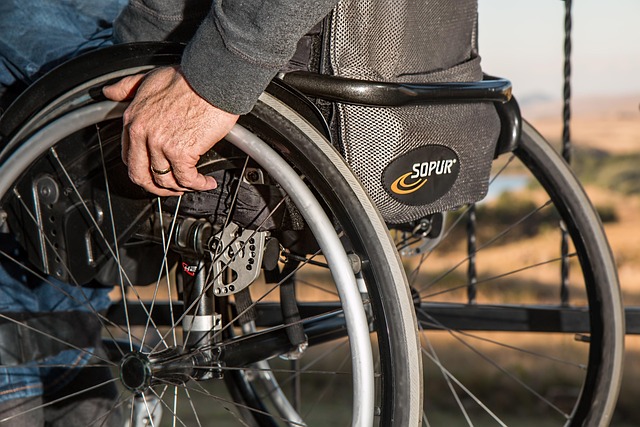Electrolytes—charged particles that dissolve in bodily fluids—play a pivotal role in physiological balance, nerve conduction, and muscle contraction. Monitoring their concentrations has traditionally relied on laboratory assays that are invasive, time‑consuming, and often limited to sporadic visits. The emergence of the electrolyte sensor marks a paradigm shift, enabling continuous, non‑invasive monitoring of sodium, potassium, calcium, and chloride levels in real time. By providing granular insights into a person’s biochemical state, these sensors empower clinicians to detect dysregulation early, tailor treatments, and reduce the burden of chronic conditions such as heart failure, renal disease, and electrolyte‑related metabolic disorders. The technology’s promise extends beyond medicine into sports science, nutrition, and personal wellness.
Foundations of Electrolyte Sensing
At its core, an electrolyte sensor converts ionic activity into an electrical signal. The most common transduction mechanisms are potentiometric, amperometric, and conductometric. Potentiometric sensors, such as ion‑selective electrodes, measure the voltage difference that arises when a selective membrane separates the sample from a reference solution. Amperometric designs, on the other hand, rely on catalytic reactions that generate a current proportional to ion concentration. Conductometric devices detect changes in conductivity caused by the movement of ions under an applied electric field. Recent advances in nanofabrication and surface chemistry have allowed these mechanisms to be miniaturized to micrometer scales, yielding arrays of sensors that can be integrated into flexible substrates for on‑body deployment.
Innovative Materials and Architectures
Material choice determines sensitivity, selectivity, and durability. Traditional glass electrodes, while reliable, suffer from brittleness and limited lifespan. Modern electrolyte sensors embrace graphene, carbon nanotubes, and polymer‑based composites that offer high surface area, tunable chemistry, and mechanical resilience. Flexible substrates such as polyimide and silicone enable conformal contact with skin, reducing motion artifacts. Layered structures—comprising a selective membrane, an ion‑conduction layer, and an electrode—allow simultaneous measurement of multiple electrolytes. Furthermore, bio‑inspired designs, such as mussel‑adhesive polymers, provide strong adhesion to sweat glands, ensuring stable sampling in ambulatory settings.
Self‑Powered Operation
- Micro‑fuel cells harvesting sweat glucose.
- Piezoelectric harvesters converting motion.
- Thermal gradients between skin and air.
- Capacitive energy storage for bursts.
Integration with Wearable Health Platforms
The leap from laboratory prototype to consumer‑grade wearable hinges on seamless data pipelines. Low‑power microcontrollers coupled with Bluetooth Low Energy (BLE) transmit raw sensor data to smartphones or edge devices. On‑device algorithms perform noise filtering, drift correction, and feature extraction, translating raw voltage or current into clinically relevant concentrations. Cloud back‑ends aggregate longitudinal data, enabling predictive analytics and population‑level insights. Integration with electronic health records (EHRs) facilitates real‑time alerts to clinicians when electrolyte thresholds are breached, prompting timely interventions. The convergence of sensor hardware, firmware, and cloud services creates a closed loop that supports personalized medicine.
Clinical Applications and Impact
Clinicians have begun to deploy electrolyte sensors in multiple settings. In intensive care units, continuous monitoring of serum sodium and potassium reduces the risk of arrhythmias and osmotic complications. For patients with chronic kidney disease, home‑based sensors provide early warnings of rising creatinine‑associated electrolyte imbalances, enabling dose adjustments without frequent clinic visits. Athletes and endurance trainers use sweat‑based sensors to fine‑tune hydration strategies, preventing cramps and heat exhaustion. Pediatric care benefits from non‑invasive monitoring during chemotherapy, where electrolyte shifts can trigger life‑threatening complications.
Continuous data streams empower physicians to move from reactive to proactive care, translating minute fluctuations into actionable interventions.
- Reduced hospital admissions.
- Timely dose adjustments.
- Enhanced patient engagement.
- Data‑driven research on electrolyte dynamics.
Challenges and Future Directions
Despite rapid progress, several hurdles remain. Calibration drift, especially in sweat‑based sensors, necessitates periodic re‑verification against gold‑standard assays. Biocompatibility of long‑term skin contact materials must be rigorously tested to avoid irritation. Data privacy concerns demand secure end‑to‑end encryption and user consent protocols. Manufacturing scalability—ensuring that nanomaterial coatings are reproducible across billions of devices—also poses a logistical challenge. Addressing these issues will require interdisciplinary collaboration between materials scientists, software engineers, clinicians, and regulatory bodies.
Toward Quantum‑Dot Electrolyte Sensing
Quantum‑dot nanostructures offer unprecedented sensitivity by exploiting size‑dependent photoluminescence shifts upon ion binding. Early prototypes demonstrate sub‑micromolar detection limits for potassium and calcium, a performance leap over conventional electrodes. Coupled with micro‑LED illumination, these devices could transform clinical diagnostics by providing instant, label‑free readings at the point of care.
Artificial Intelligence for Interpretation
Machine‑learning models trained on multi‑modal sensor data can distinguish pathological patterns from benign fluctuations. Predictive algorithms anticipate electrolyte derangements before clinical symptoms arise, enabling preemptive therapy. Moreover, AI can adapt calibration curves to individual skin properties, ensuring personalized accuracy across diverse populations.
Regulatory Landscape and Market Adoption
Regulatory agencies such as the U.S. Food and Drug Administration (FDA) and the European Medicines Agency (EMA) are gradually establishing guidelines for wearable electrolyte monitoring devices. Demonstrating safety, accuracy, and data integrity is critical for clearance. Companies are leveraging pre‑market notification (510(k)) pathways for devices that are substantially equivalent to existing approved monitors, while novel quantum‑dot platforms may require investigational device exemptions. Manufacturers also navigate a patchwork of regional data protection laws, notably the General Data Protection Regulation (GDPR) in the EU, to ensure user privacy. Compliance not only facilitates market entry but also builds consumer trust, accelerating adoption across hospitals, athletic programs, and home‑care ecosystems.
Standards and Certification
- ISO 14971 risk management.
- IEC 60601‑1 medical electrical equipment.
- ISO 15197 blood glucose accuracy.
- IEEE 11073 health informatics.
- FDA 510(k) pre‑market notification.
Conclusion
The evolution of electrolyte sensor technology illustrates how nanoscale innovation can translate into tangible health benefits. By moving from episodic laboratory tests to continuous, wearable monitoring, clinicians gain a richer, real‑time understanding of their patients’ biochemistry. While challenges in calibration, biocompatibility, and data governance remain, the trajectory points toward a future where electrolyte imbalances are detected and corrected before they manifest as clinical events. As research converges on quantum‑dot sensitivity, AI‑augmented interpretation, and fully autonomous power harvesting, the humble ion will no longer be a silent signal in the body—it will become a proactive partner in personalized healthcare.




